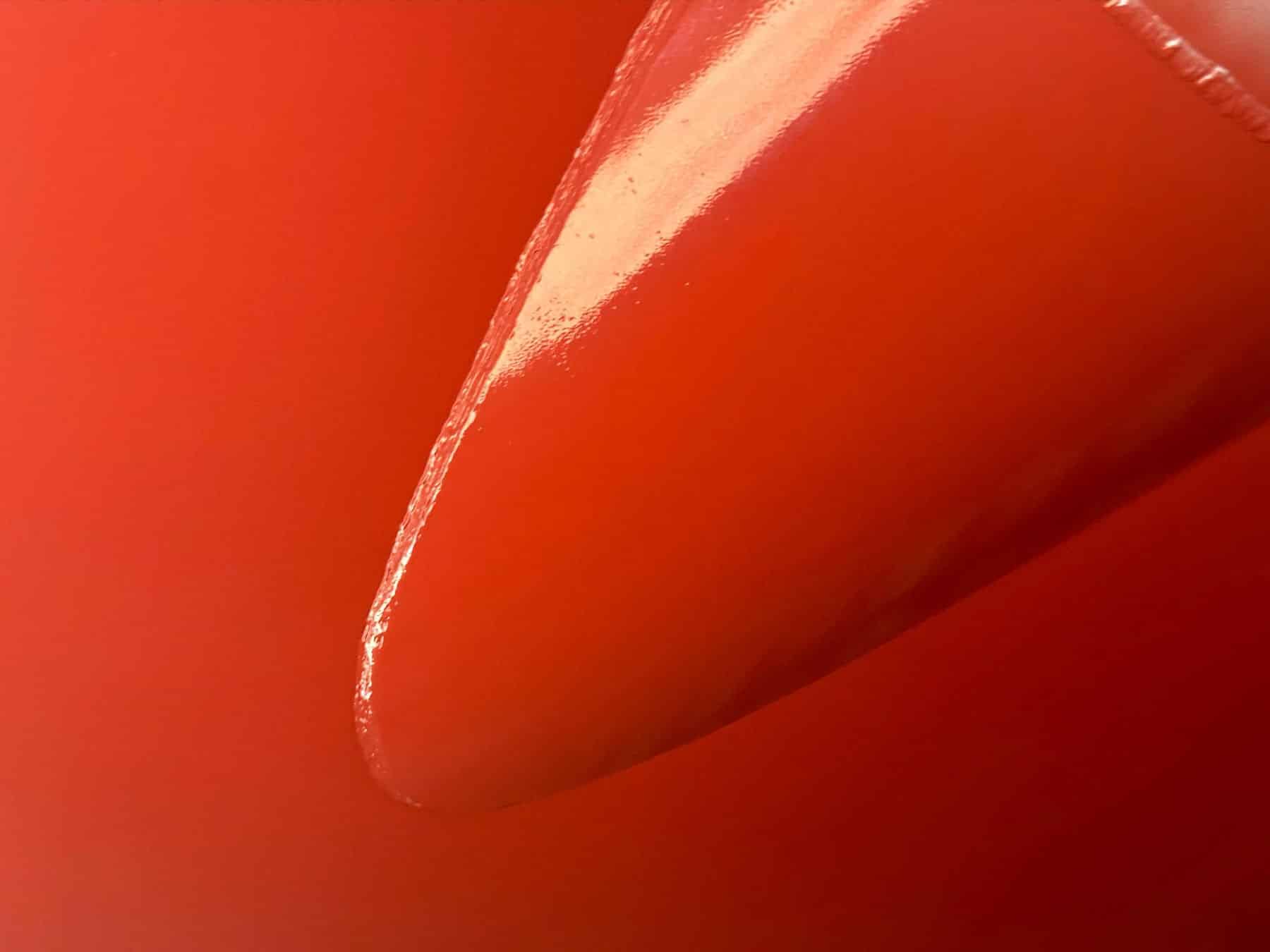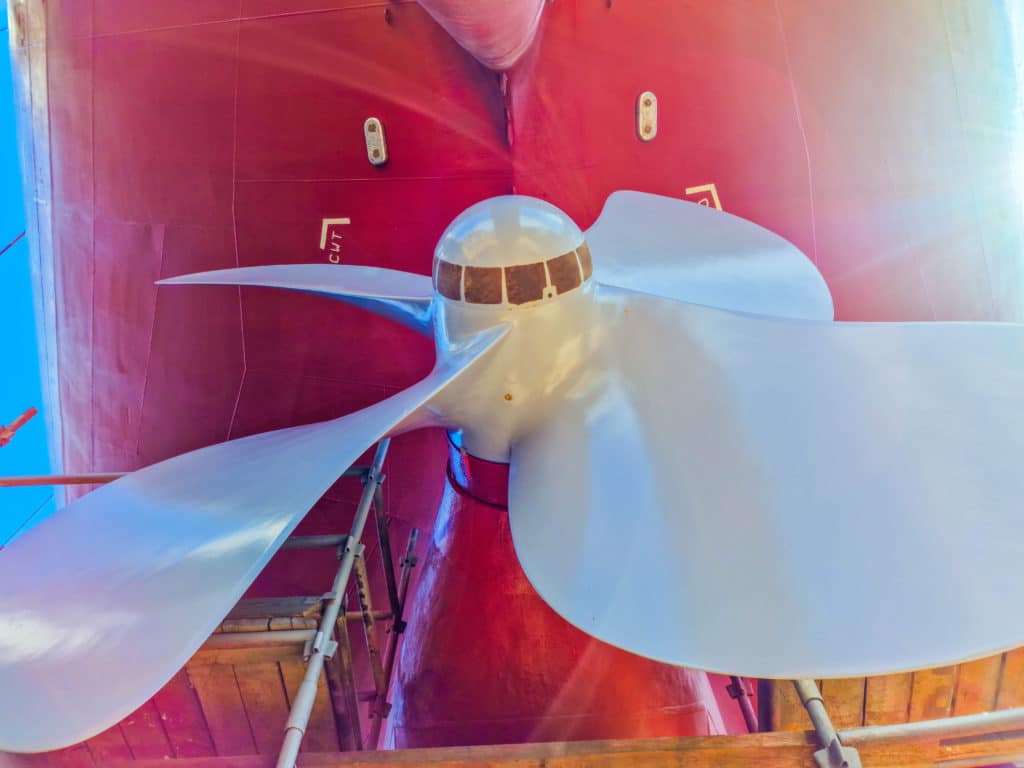A sea change in sustainable shipping
The shipping industry has long been searching for an environmentally- friendly solution to combat biofouling. Increased fuel consumption and greenhouse gas (GHG) emissions, slower ship operating speeds at constant power, and transfer of invasive aquatic species are problems that cost the shipping industry billions of dollars each year. Canadian company GIT Coatings has developed a graphene-based hard foul release solution to help shipowners save money on fuel and boost overall efficiency whilst having the smallest impact on the environment.
For decades, antifouling coatings have been used by the marine industry to prevent the accumulation of marine organisms on ships’ hulls. However, they work by leaching toxic substances like copper, cuprous oxide and heavy metals. Additionally, they break down into microplastics through a shedding process, contributing to the increase of microplastic pollution in our oceans. In a study published in 2022, it was estimated that 1.9 million tonnes of paint end up in oceans and waterways every year, representing approximately 58% of all microplastics entering water, with some 18% estimated to come from the maintenance and operations of ships and offshore rigs alone.
In 2008, the use of TBT-containing antifouling coatings was banned by the International Maritime Organization (IMO) due to its detrimental impact on marine life. This led to innovations in fouling control coatings, including the development of soft foul release silicone-based coatings that rely on less invasive mechanisms for antifouling protection.
Although some silicone-based coatings are biocide-free and have been developed as an environmentally-friendly solution for marine vessels, they still contain silicone oils which are released into the ocean over time. Further to that, they cannot be cleaned without damage and require a more difficult application process.
Pioneering graphene in marine coatings
In 2017, GIT Coatings started to pave the road to a new category of graphene-based marine coatings which present a viable option for the shipping industry to reach both their sustainability and profitability goals. These coatings are based on hard foul release technology and offer a full range of benefits for the shipping industry. Graphene is known for its high mechanical strength, low friction, and impressive toughness, which in addition to drag reduction makes it more resistant to mechanical damage compared to silicone-based coatings.
Graphene-based hard foul release coatings are an environmentally friendly alternative to conventional toxic antifouling and soft foul release options as they eliminate the need for biocides, fluoropolymers, and unbound silicone oil release. This new type of coating incorporates more sustainable chemistry and predominantly uses more durable materials. It has virtually zero volatile organic compounds (VOCs) compared with existing antifouling coatings that can contain up to 40% by volume and do not leach any substances into the water column.
GIT Coatings was founded by two materials engineers, Mo Algermozi and Marciel Gaier, who met at Dalhousie University, Nova Scotia, while researching graphene and its potential uses. As they delved into various applications for this excellent material, the maritime industry with its rough and toxic coatings emerged as a sector ripe for disruption.
Recognising the industry’s shifting emphasis towards sustainable and efficient solutions, Algermozi and Gaier identified the significant role of hull coatings in enhancing ship efficiency by reducing drag. This revelation steered GIT Coatings towards the development of XGIT-FUEL, a patented low-friction hard foul release hull coating which is gaining interest from shipowners across the globe. The company has later expanded its product line with a durable propeller coating system, XGIT-PROP, and underwater noise-reducing XGIT-URN.

GIT Coatings has developed a graphene-based hard foul release solution
Navigating challenges with sustainable solutions
GIT’s graphene-based hull coating XGIT-FUEL has been independently validated and type-approved by the well-recognised ship classification society Lloyd’s Register. LR’s study, carried out in 2021 and 2022, demonstrated an efficiency improvement of over 10% compared with traditional coatings. In addition, the Center for Corrosion and Biofouling Control at Florida Tech confirmed XGIT-FUEL’s exceptional foul-release capabilities and its superior durability during cleaning, which might be needed after extended vessel idling periods. This coating also aligns perfectly with proactive hull grooming, a practice recently endorsed by the IMO in its latest biofouling management guidelines.
XGIT-FUEL also offers considerable operational benefits for drydocks. It requires fewer layers than alternatives, its application is more efficient, and its low VOC content enhances safety for workers while reducing environmental impact. Furthermore, the temperature range for applying XGIT-FUEL is from -5 to 40°C, which exceeds that of other high-performance coatings. This broadens the application period and enables shipowners to boost the efficiency of vessels scheduled for winter drydockings. This in turn accelerates the marine industry’s move towards decarbonisation.
XGIT-PROP, a graphene-based propeller coating system, was designed to withstand the rigorous conditions faced by propellers. Combining a strong adhesive primer with a hard foul release topcoat, XGIT-PROP overcomes the shortcomings of conventional soft foul release coatings that often peel away from propeller blades, and ensures the propeller’s surface stays smooth over the drydocking cycle. In a study presented by one of the world’s leading tanker operators, Stolt Tankers, it was proved that XGIT-PROP has the potential to reduce fuel consumption by up to 4%.
Recently, the shipping industry has started to address the issue of underwater radiated noise, a form of waterborne emission that can adversely impact whales and various marine species. GIT Coatings has formulated a unique coating, XGIT-URN, to combat this environmental challenge. Applied between the anticorrosive primer and the topcoat, XGIT-URN has been proved to minimise the noise and frequencies emitted from the hull. Following successful pilot tests with Transport Canada in 2020, this coating has been adopted on numerous vessels operating in environmentally sensitive areas.

The company has later expanded its product line with a durable propeller coating system, XGIT-PROP
Leading the wave of change
GIT Coatings has been at the forefront of revolutionising the marine coatings industry. With a commitment to delivering environmentally friendly, efficient, and economically viable solutions, the company is helping shipowners in achieving their sustainability goals.
Having coated more than 100 oceangoing vessels with its graphene-based coatings in 2023 and expanding its presence globally, GIT Coatings demonstrates a compelling growth trajectory. This momentum is set to continue, especially with plans to transition to a fully automated, carbon-neutral production facility in 2024.
GIT Coatings’ active participation in the International Maritime Organization (IMO) and other significant industry working groups signifies the company’s leadership and commitment to sustainable maritime future. Adoption and endorsements from industry leaders such as Eastern Pacific Shipping, Stolt Tankers and Kotug amongst many others further emphasise the effectiveness and potential of GIT Coatings’ innovations.
Read more stories like this in the latest issue of Protective Coatings Expert

